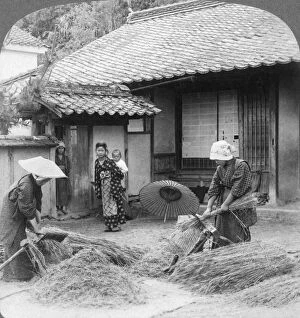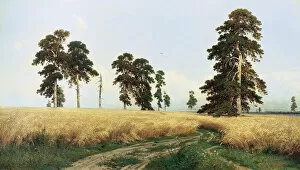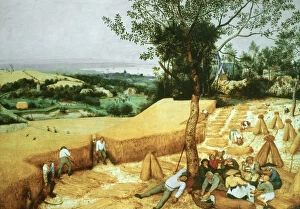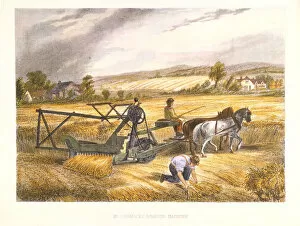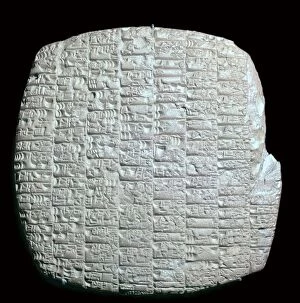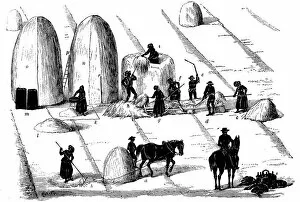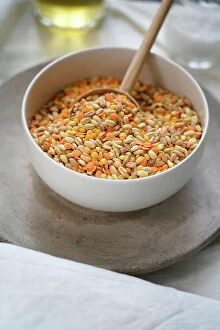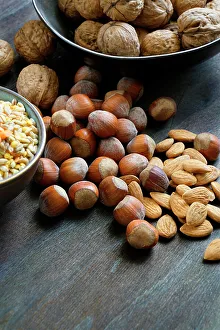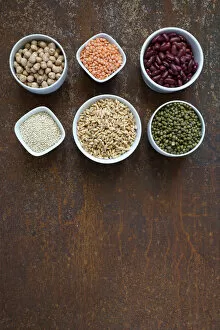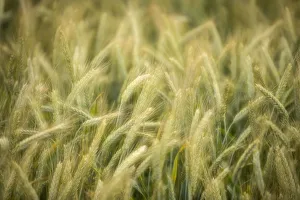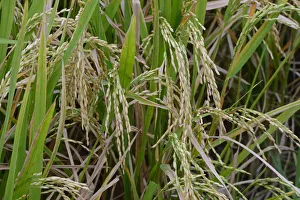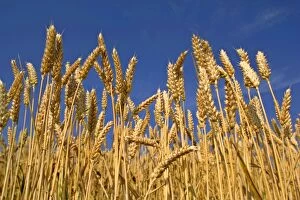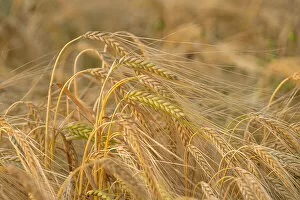Cereal Collection (page 14)
"Cereal: Nourishing the World's Harvest" Step into the world of agriculture, where John Deere combine harvesters gracefully glide through fields of golden barley
Reaping and socking-up corn to dry, Lake Drie, Canada, 1880. A print from The Graphic, 29th May 1880
Egyptian tomb figure of a woman grinding corn using a saddle quern, c2500 BC. Photograph taken c1910
Walnuts, almonds, hazelnuts and cereal, Products rich in Vitamin E for a healthy diet, Italy, Europe
All Professionally Made to Order for Quick Shipping
"Cereal: Nourishing the World's Harvest" Step into the world of agriculture, where John Deere combine harvesters gracefully glide through fields of golden barley, like artists painting a masterpiece. The bountiful harvest fills trailers pulled by sturdy tractors, carrying grains that will soon become an essential part of our daily lives. But cereal isn't limited to just barley; it encompasses a diverse range of crops. Wild rice dances in the breeze, while a CLA forage harvester unloads its precious cargo into waiting tractors and trailers. These wholecrop they are transformed into alkalage, providing nutritious animal feed for our furry friends. Farming is an intricate dance with nature, and wheat takes center stage during harvest season. Majestic wheat fields sway under the watchful eye of a Royal Line poster, reminding us of the importance of this staple crop in maintaining a balanced diet. The Cls combine harvester works tirelessly to gather ripe ears from vast wheat fields near Ledbury, Herefordshire. Spelt, buckwheat, and rice also join this symphony of flavors and textures as they contribute their unique characteristics to our breakfast bowls. Nature's artistry comes alive when vibrant red poppies bloom amidst ripening barley on Dartmoor's rolling landscape. Their vivid colors illuminated by the warm sun create a breathtaking sight that reminds us why we must cherish and protect these natural wonders. In times past, cereal played an important role in rallying spirits during challenging times. A lithograph titled "We Will Beat the Enemy with our Bolshevik Harvest Gathering" captures how even during war years ago people found solace in their abundant harvests. So next time you pour yourself a bowl or bite into freshly baked bread made from Triticum vulgare (bread wheat), take a moment to appreciate the journey it took from field to table—a journey filled with hard work and dedication by farmers around the world.





